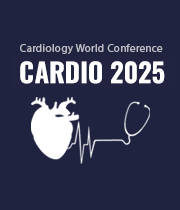Title : The misleading culprit: Spontaneous coronary artery dissection mimicking atherosclerotic ACS
Abstract:
Introduction: Spontaneous Coronary Artery Dissection (SCAD) is an infrequent but increasingly recognised non-atherosclerotic cause of Acute Coronary Syndrome (ACS), predominantly affecting women. Accurate diagnosis is crucial as management differs significantly from traditional atherosclerotic disease and is often conservative in nature.
Aim & Objectives: To present a case of SCAD initially misclassified as Non-ST Elevation Myocardial Infarction (NSTEMI), highlighting the diagnostic challenge, importance of multimodal imaging, and safe conservative management in a stable patient.
Methods: We describe a single-centre case report of a 68-year-old woman with hypertension who presented with acute chest pain. Clinical findings, ECG, blood markers, echocardiography, coronary angiography, and subsequent cardiac CT imaging were reviewed to confirm the diagnosis of SCAD. Autoimmune testing was performed to rule out connective tissue disorders.
Results: Initial ECG showed poor R-wave progression; troponin-T levels were significantly elevated. Echocardiography demonstrated apical regional wall motion abnormalities (LVEF 45%). Coronary angiography revealed a long, tubular narrowing in the Mid-Left Anterior Descending Artery (LAD) without clear evidence of atherosclerotic plaque rupture. Invasive intervention was deferred. Six-week follow-up CT coronary angiography demonstrated abrupt luminal narrowing in the mid-LAD consistent with SCAD. Autoimmune screen was unremarkable. The patient remained asymptomatic and was managed medically with good recovery.
Summary: SCAD can masquerade as typical ACS, especially in postmenopausal women without traditional cardiovascular risk factors. In stable patients, delayed coronary CT angiography can reveal the pathognomonic features of SCAD, guiding appropriate non-invasive management.
Conclusion: This case underscores the need for heightened clinical suspicion and careful interpretation of angiographic findings in atypical ACS presentations. Conservative management with follow-up CT angiography is a safe and effective approach in stable SCAD patients.
Keywords: Spontaneous Coronary Artery Dissection, SCAD, Acute Coronary Syndrome, CT Coronary Angiography, NSTEMI, Conservative Management.



